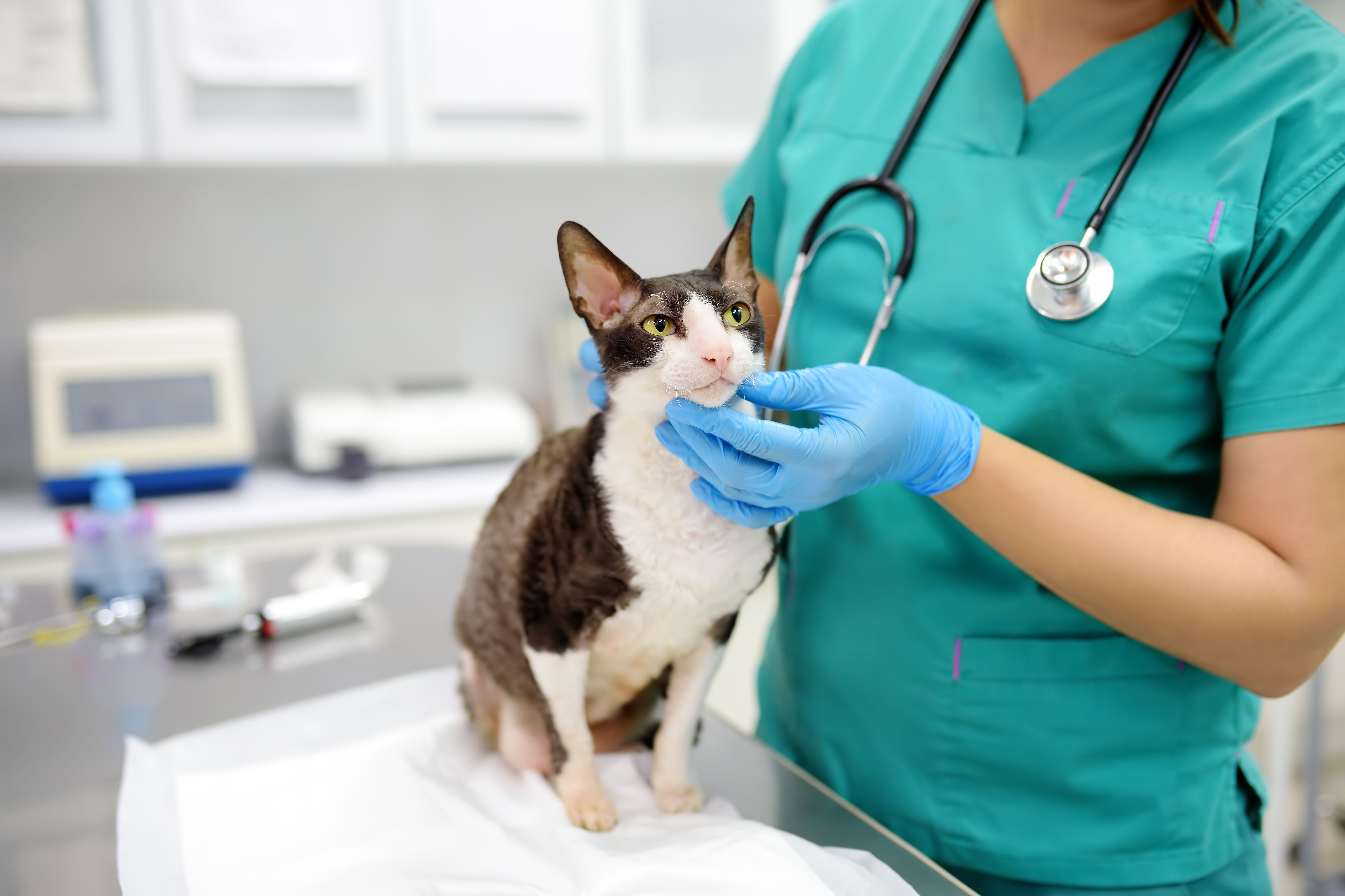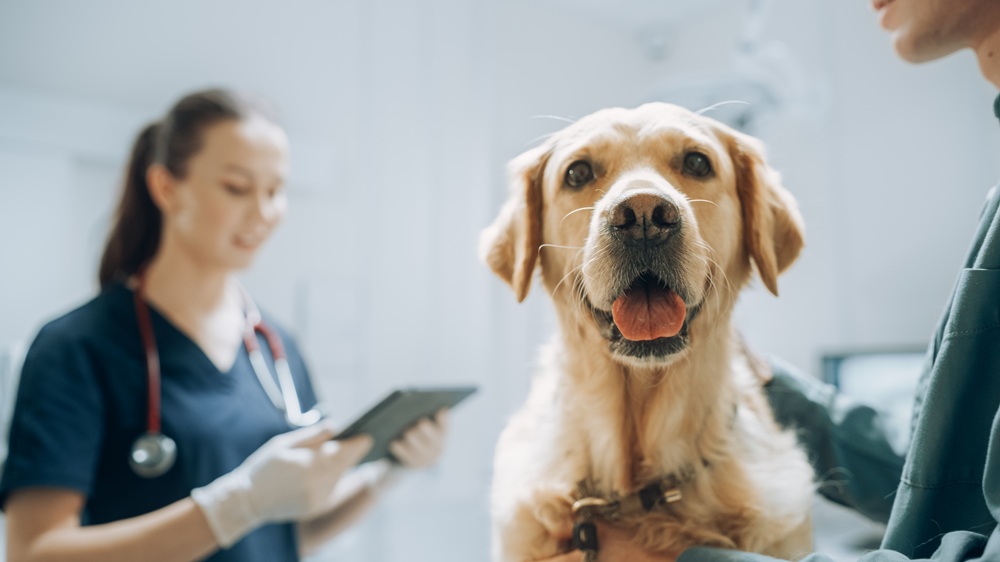Veterinary specialties that go beyond general pet care
Wiki Article
Exactly How a Veterinary Specialty Hospital Can Cure Your Pet's Disorders With Advanced Techniques
Veterinary specialty hospitals play an important duty in attending to complex wellness concerns in animals. They use advanced techniques and modern technologies that boost medical diagnosis and therapy. With accessibility to specialized services, family pet proprietors can locate customized options for their pets' conditions. This increases vital questions about the particular approaches used and the benefits they give. Comprehending these elements can notably impact a pet dog's recuperation journey.Recognizing the Role of Veterinary Specialty Hospitals
Key care vets supply vital solutions for pet wellness, veterinary specialty hospitals play an essential role in resolving complex clinical problems that need sophisticated diagnostics and treatment. These centers are furnished with specialized innovation and seasoned professionals who concentrate on particular locations of veterinary medication, such as oncology, cardiology, and neurology.Veterinary specialty hospitals promote a collective strategy, typically operating in conjunction with a pet dog's primary vet to produce comprehensive care strategies. They give accessibility to sophisticated imaging methods, such as MRI and CT checks, which are not normally readily available in standard clinics. Additionally, these hospitals provide intensive treatment systems for seriously sick family pets, guaranteeing continuous monitoring and assistance.
Specialized Services Offered by Veterinary Experts
Veterinary professionals offer important solutions that boost family pet health care, specifically through innovative analysis imaging methods. These tools allow precise evaluations of complex medical conditions, leading to more reliable targeted treatment plans. By integrating these specialized solutions, vet hospitals can substantially boost patient results and total wellness.Advanced Diagnostic Imaging
Advanced analysis imaging plays a crucial duty in modern-day vet medication, making it possible for professionals to get comprehensive understandings right into a pet dog's health and wellness. Methods such as X-rays, ultrasound, calculated tomography (CT), and magnetic vibration imaging (MRI) enable vets to picture internal structures without intrusive treatments - Learn More. These innovative imaging methods help in identifying a variety of conditions, from growths and cracks to body organ abnormalities. By offering clear images, they enhance the precision of assessments, which is important for efficient treatment planning. In addition, specialized veterinary radiologists translate these images, ensuring that subtle concerns are not ignored. Eventually, advanced diagnostic imaging contributes in supplying substantial care, as it permits very early discovery and treatment in a pet's medical problems
Targeted Therapy Plans
Targeted treatment plans are important for dealing with the specific health and wellness requirements of family pets, guaranteeing that each pet receives individualized treatment tailored to its special problem. Veterinary professionals create these strategies based upon complete evaluations, including sophisticated analysis imaging and research laboratory tests. By focusing on the individual animal's medical diagnosis, age, breed, and lifestyle, specialists can suggest efficient therapies, ranging from medication changes to medical interventions. These strategies additionally include follow-up treatment and checking to track the pet dog's progress and make necessary adjustments. This approach promotes excellent results and improves the overall lifestyle for animals dealing with complicated health and wellness difficulties. Ultimately, targeted therapy plans represent a dedication to providing the highest requirement of veterinary care.Advanced Diagnostic Techniques for Accurate Diagnoses
As pets encounter progressively intricate health difficulties, the assimilation of advanced diagnostic strategies has come to be necessary for attaining accurate medical diagnoses. Veterinary specialty hospitals make use of state-of-the-art imaging technologies, such as MRI and CT scans, to picture inner structures with exceptional clearness. These techniques allow vets to identify abnormalities that might not show up with conventional approaches.In addition to imaging, advanced lab examinations, consisting of genetic and biomarker analyses, supply essential understandings right into hidden conditions. These tests enable vets to discover conditions at earlier stages, promoting timely intervention. Moreover, making use of endoscopy enables straight visualization of inner organs, helping in the medical diagnosis of breathing and gastrointestinal issues.
Innovative Treatment Alternatives for Complicated Problems
Cutting-edge therapy options for complicated conditions in pets have arised as a vital focus within veterinary specialty hospitals. Utilizing advanced diagnostic tools, these facilities enhance their capability to recognize problems accurately and tailor ideal interventions. Vet services. Furthermore, the application of minimally invasive procedures and progressed recovery methods offers pets a far better chance at recuperation with decreased discomfortInnovative Diagnostic Equipments
While the landscape of veterinary medication remains to advance, cutting-edge analysis tools have become necessary assets for addressing intricate problems in family pets. These innovative innovations, consisting of electronic imaging, ultrasound, and molecular diagnostics, allow vets to obtain specific details regarding a family pet's health and wellness condition rapidly. For example, high-resolution imaging strategies can disclose complex details of internal frameworks, allowing exact analyses of illness or injuries. In addition, hereditary screening provides understandings into hereditary conditions, directing customized therapy plans. By leveraging these cutting-edge analysis tools, vet specialty hospitals can boost their capability to identify ailments that may have previously gone undetected. Inevitably, these developments add to boosted outcomes and enrich the general quality of treatment provided to beloved family pets.Minimally Intrusive Treatments
Innovations in veterinary medicine have paved the way for minimally invasive procedures, which offer new therapy alternatives for complex problems in family pets. These ingenious techniques, such as laparoscopy and endoscopy, enable veterinarians to perform surgical procedures with smaller sized lacerations, minimizing trauma and healing time. By using specialized tools and video cameras, vets can diagnose and deal with problems like lumps, intestinal disorders, and joint troubles with accuracy - Learn More. This technique reduces discomfort and causes quicker healing, making it possible for pet dogs to return to their regular activities quicker. Additionally, minimally intrusive treatments often cause much less scarring and a lower risk of problems. As vet specialty hospitals take on these sophisticated methods, pet proprietors can feel much more confident in their animals' care and general healthAdvanced Rehabilitation Techniques
As vet medication develops, advanced rehabilitation strategies are becoming important for taking care of complex conditions in pet dogs. These techniques include an array of ingenious therapy options, including hydrotherapy, laser treatment, and physical treatment. Hydrotherapy makes use of water resistance to improve flexibility and reinforce muscles, beneficial for animals recouping from surgical treatment or injury. Laser treatment advertises recovery by lowering swelling and pain, cultivating quicker healing times. Physical treatment employs targeted exercises to boost stamina and adaptability, tailored per pet's certain needs - Vet services. Furthermore, modalities like acupuncture and chiropractic care modifications can even more sustain recovery by easing discomfort and improving total wellness. Veterinary specialty hospitals are significantly incorporating these methods, making sure family pets obtain comprehensive care that attends to both emotional and physical recovery, eventually boosting their high quality of lifeThe Value of a Multidisciplinary Technique
A multidisciplinary approach in veterinary care substantially boosts the treatment results for family pets, as it incorporates expertise from numerous specializeds to resolve intricate wellness concerns. This collaborative approach entails vets, professionals, professionals, and assistance staff working together to develop comprehensive therapy strategies tailored to each pet's special requirements. By combining understanding from areas such as surgery, interior medication, oncology, and rehabilitation, veterinarians can determine underlying conditions that may or else go unnoticed.This technique cultivates interaction amongst team members, ensuring that all aspects of a pet's wellness are thought about. A pet recuperating from surgery may profit from input from both a doctor and a recovery professional, leading to an extra effective recuperation process. Eventually, a multidisciplinary approach not just improves the top quality of care yet likewise enhances the general wellness of pet dogs, providing them with the finest opportunity for an effective recovery and long-lasting health.
Cutting-Edge Innovation in Veterinary Medicine

Telemedicine has actually also arised as an important source, making it possible for veterinarians to speak with pet here proprietors remotely, thereby facilitating prompt interventions. Additionally, the assimilation of expert system in assessing clinical information adds to more reliable treatment plans customized to private demands. Sophisticated lab equipment permits rapid blood analysis and virus discovery, fostering prompt clinical responses. As vet specialty hospitals proceed to incorporate these innovations, they not only boost the quality of care however additionally considerably boost the overall wellness of pet dogs.
Success Stories: Real-Life Instances of Family Pet Recuperation
Various heartwarming success tales highlight the amazing recuperations of pets treated at vet specialty hospitals. One such instance involved Bella, a Golden Retriever identified with an extreme orthopedic issue. After innovative medical intervention and recovery, Bella was not just able to walk once again but likewise to run happily in the park, much to her owners' pleasure.One more motivating tale features Max, a pet cat with chronic kidney illness. With specialized dietary administration and cutting-edge treatments, Max's condition maintained, allowing him to reclaim his energy and hunger. His proprietors were tickled to see him go back to his spirited self.
Luna, a Dachshund that endured a back injury, undertook sophisticated therapies, leading to an incredible recuperation. These tales highlight the expertise and empathy located in veterinary specialty hospitals, showcasing their capacity to recover wellness and joy to precious family pets and their family members.
Regularly Asked Concerns
What Should I Expect During My Family pet's Specialty Examination?
Throughout a specialty appointment, pet owners can anticipate a complete evaluation, in-depth medical history conversations, analysis tests, and tailored therapy options. The vet professional will supply insights and referrals for the pet's details wellness demands.Just How Can I Discover a Veterinary Specialty Hospital Near Me?
To locate a veterinary specialty hospital close by, one can use on the internet online search engine, examine regional directory sites, or seek referrals from primary vets. Additionally, family pet owner online forums can supply important insights and experiences about neighboring centers.Are Specialty Solutions Covered by Pet Dog Insurance Policy?
Specialty solutions may be covered by family pet insurance policy, yet coverage varies by plan. Proprietors must meticulously evaluate their insurance policy strategy details and consult their service provider to recognize the level of coverage for specialty vet solutions.The Length Of Time Will My Pet's Treatment Take?

The duration of a pet's therapy can differ considerably, typically ranging from a few days to a number of weeks. Elements influencing this timeline include the specific condition, treatment type, and the family pet's total health and wellness and feedback.
What Are the Costs Connected With Specialty Veterinary Treatment?
The costs connected with specialty veterinary care can differ commonly, normally ranging from hundreds to thousands of dollars. Aspects affecting these expenditures consist of the intricacy of the problem, needed therapies, and analysis procedures required for efficient treatment.Veterinary specialty hospitals play an important duty in addressing intricate health concerns in pets. Primary treatment vets provide vital services for pet wellness, vet specialty hospitals play an important function in resolving complex medical problems that require innovative diagnostics and treatment. Veterinary specialty hospitals assist in a collaborative technique, typically working in combination with a pet's main vet to create detailed treatment plans. Cutting-edge treatment alternatives for intricate conditions in animals have emerged as a crucial focus within vet specialty hospitals. A multidisciplinary technique in vet care greatly boosts the therapy end results for animals, as it integrates experience from numerous specializeds to resolve complicated health concerns.
Report this wiki page